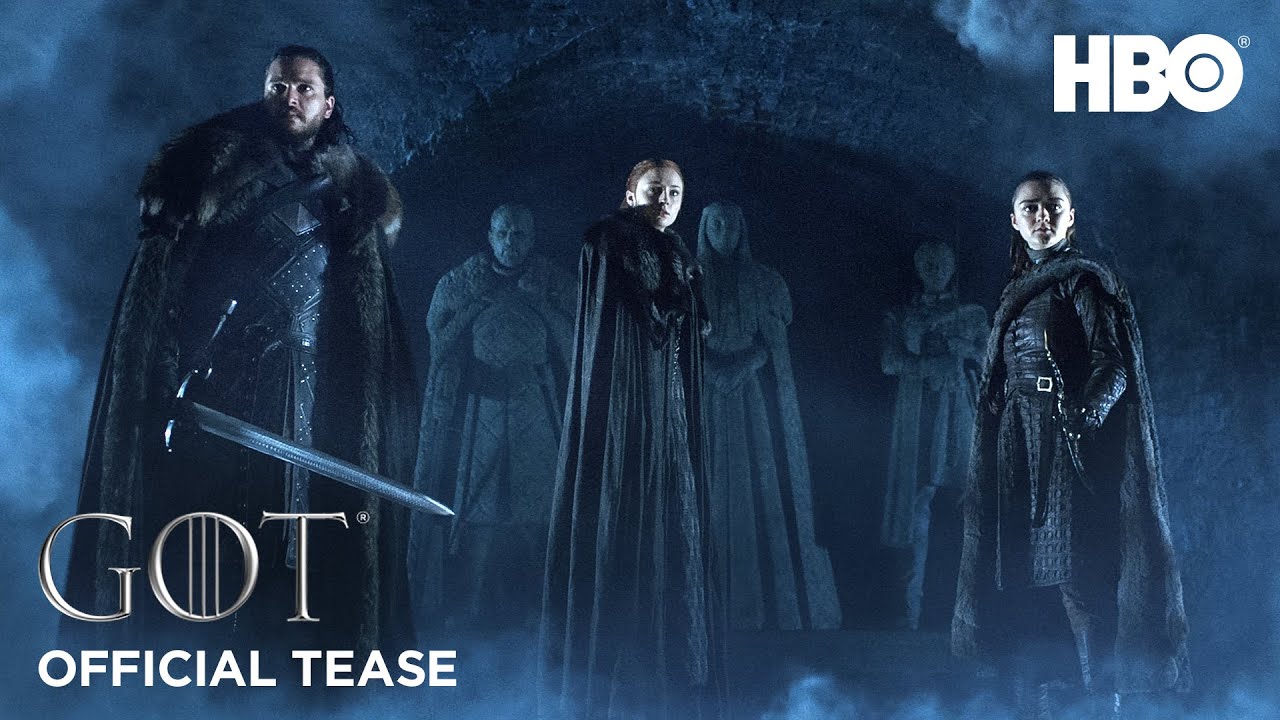After a 595-day hiatus, fans were once again transported back to Westeros on Sunday night for the premiere of the final season. For cord-cutters, it was a reminder of what good-quality TV looks like – it can be more than background noise for mindless social-media scrolling or filler entertainment before bedtime.
“Game of Thrones” is the kind of show that is so captivating you actually put down your smartphone for the hour that it’s playing and appreciate the remarkable work put into each episode. But Sunday also served as a reminder that the series is winding down, and that the era of online streaming and binge-watching may not be as conducive to recreating a following like GoT’s.
It was impossible to avoid references to the series on social media the last few days. And unlike the meme frenzy a few months ago around Netflix Inc.’s “Bird Box,” which mostly poked fun at the film’s absurdity, posts about GoT conveyed pure excitement and fandom – even from dozens of brand accounts that have nothing to do with the show.
“This one goes out to everyone who’s frantically meal-prepping so they can get done before #GameofThrones later,” Cooking Light magazine posted to Instagram, with a photo of some roasted vegetables. Toilet-paper maker Charmin made a joke about the other “throne.” Oreo asked to which House fans pledge their fealty. Shake Shack promoted an “icy dragonglass shake.” Urban Decay said its GoT-themed eye-shadow palette sold out. And Crocs drew chuckles with its own, uh, “white walkers”:
But winter is here. Just like the real White Walkers have breached The Wall, online-streaming apps have permanently infiltrated the cable-TV space and are converting subscribers at a pace that should only accelerate over the next year. There is no dragonglass to stop them.
HBO is the definition of quality, but after “Game of Thrones” ends next month, churn – or rate of customer attrition – is going to be a problem for the network’s $15-a-month streaming app, HBO Now. That’s because, at the end of the day, quantity is what may keep subscribers from hitting pause on their memberships. The majority of HBO’s 140 million global subscribers still watch via traditional pay TV, a sticky crowd because of the difficulty of changing or pausing cable packages mid-contract. However, viewers are increasingly switching to apps like HBO Now, which make it easy to temporarily cancel when there are programming lulls. As I’ve written before, part of Netflix’s appeal is that there’s always something to watch, even if its library wouldn’t be your first choice.
AT&T Inc., HBO’s new parent, is looking to ramp up the network’s output as it tries to compete with Netflix, a move that’s not gone without criticism from employees and investors concerned about the potential to hurt the brand’s reputation. (AT&T is planning to introduce another service for its HBO and other WarnerMedia content late this year.) It’s a similar challenge for Walt Disney Co., as it prepares to launch the Disney+ app in November and looks to fill it with the most subscription-worthy material. Media companies will simply have to sacrifice some quality for the sake of having more content, and consumers will be stuck paying for numerous apps if they want access to more than just one company’s productions.
So if you think this has a happy ending, you haven’t been paying attention.
















































You must be logged in to post a comment Login